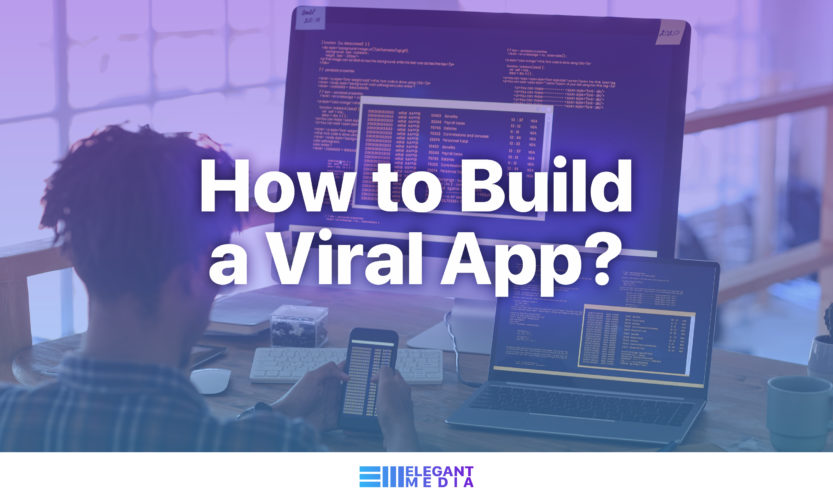Google Play and Apple’s App Store are currently hosting hundreds of thousands of apps on their platforms. However, there are only a handful of apps that can gain the attention of users.
One of the ways of getting those thousands of downloads is by building an app that has the possibility of going viral.
But what exactly is a viral app? How will you know when your app has gone viral? And what features should you include in the app to increase its chances of going viral? Read on to find out.
What is a Viral App?
A viral app is an app that users share on their own on social media platforms or word of mouth without any forced incentive from the builders of the app. An app that catches the attention of the user, adds value to the user’s experience. This compels them to recommend the app to other users, making an app go viral.
In simple terms, a viral app is one that people love to use to such an extent that they strongly advise other people to use it too; so that they bring in more users for the app. It is an app that is not just downloaded by many people, but is also used by everyone who downloads it continuously.
How Is Virality Calculated and Measured?
The most dependably accurate way to measure virality is by using the viral coefficient method. The best way to explain this is through an example.
Take for instance that an app is downloaded by a single user first. That one user likes the app so much that she recommends it to three of her friends. Those three friends also like the app and further recommend it to three more people. This means that one user brought in three more users and those three users brought in three more users each. Therefore, the viral coefficient for this example would be 3.0. In general, a viral coefficient of anything more than 1.0 is considered sufficient to ensure that an app goes viral. The higher the coefficient is, the faster your userbase will grow.
On the other hand, a general way to measure an app’s virality is simply by looking at the number of times it has been downloaded within a fixed time period, and then comparing it to the user rating it has on the app store. An app which has at least 10,000 downloads within few days, a user rating of at least 4.0 out of 5 and at least 80-90% positive reviews can safely be put in the category of a viral app.
Metrics to Focus Upon for Building a viral app?
For an app to go viral, there are certain metrics that an app developer can work on so that the virality can be influenced from the day the app is launched.
Below are some things to keep in mind while designing an app if you want it to go viral:
1. App design
An app should be designed to be extremely user-friendly. The interface should be such that can be understood even by those who are not too tech savvy. The design should be something that appeals to the masses and provides a genuinely great UX – user experience that will encourage them to refer the app to others.
2. Share options
Do not forget to include share options in your app so that users can directly share the app’s content on their social media accounts. The sharing process should be quick and uncomplicated. Most popular social networks such as Facebook and Twitter have their APIs to make this process easier during app development process.
3. App visibility
An app which is not easily visible on the app store would never attain the status of a viral app simply because it would take too much time for the users to find it. Make sure that the app’s title and description contain some specific keywords which will increase its visibility on the play store. Using a well defined App Marketing Strategy will help you in this step.
4. Value addition
When you are developing an app, you have to ask yourself whether your app is worth being shared? Does it add any value for the user? Does it have any features which will make users want to share the content with their friends? If the answer to these questions is yes, then you will know that the app does add value for the users.
What Strategies and Techniques You Must Specifically Use For Viral Growth in Mobile Apps?
The following are our tips for strategies/techniques that can help you to make your app go viral:
5. Measure your success
The best way to make sure that your app goes viral is to ensure that you keep a good check on the analytics of your app’s usage so that you can know when and where it is going wrong. If you see a lot of users uninstalling the app, you should immediately take corrective action and update the app to make it more appealing.
6. Positive Reviews
Your app needs positive reviews to make it appealing to new customers. Ask your customers for reviews and connect with them to solve any problems they may be facing to ensure that they write a positive review for your app. You can use the app to periodically ask the users to see if they are happy with the app, and if so to rate it in Google Play or Apple’s App Store.
7. Defined target customers
You will need to spend some of your resources in presenting your app to the initial set of customers who can then help you make it go viral. Your target customers must belong to a well-defined group depending on age, gender, nationality etc. This will save you a lot of time, money and effort.
9. Reward
This strategy is being practised by a lot of high-growth apps and has given some excellent results. This simply requires you to reward the app user for sharing the app with their friends. You can also introduce rewards for the friend who accesses the app through the link sent by your current user. For example, with Dropbox, you can invite a friend, and both the user and the friend will get a reward.
Some examples of successful viral apps
Candy Crush Saga is an app that every smartphone user must have heard of and may have installed on his phone at least for some time when it had gone viral. Easy to understand gameplay, beautiful graphics, and addictive gameplay are what contributed to the app’s virality.
Uber is an example of a viral app that has popularised incentivised user-acquisition. However, if you don’t carefully monitor your financials, paying a high reward to acquire users will require much Venture-backed financing.
On the other hand, Snapchat is an example of an app that went viral purely because of its users sharing the content of the app on their social media pages.
Pinterest is also a classic example of a viral app that provides value to the user that they feel that it is something that everyone should be using.
Do you have a viral app idea?
If you have a viral app idea, and would like to know the end-to-end process of building and releasing it on the App Store to be released by millions of users, contact us for a free consultation.






